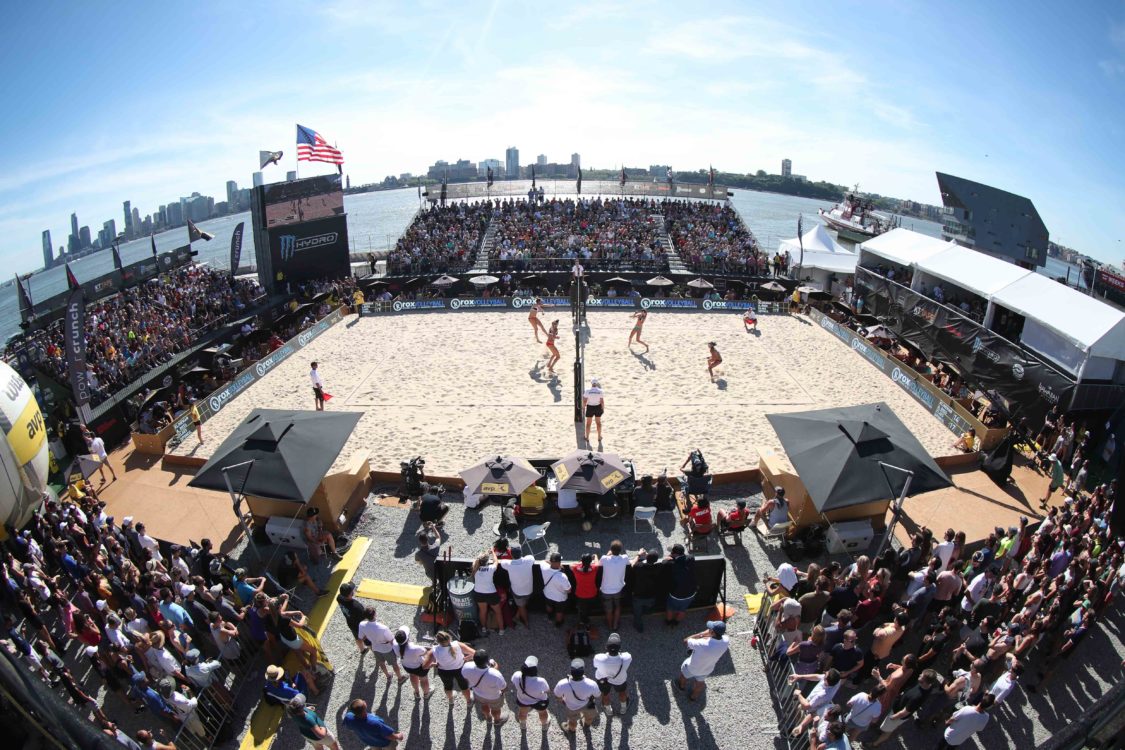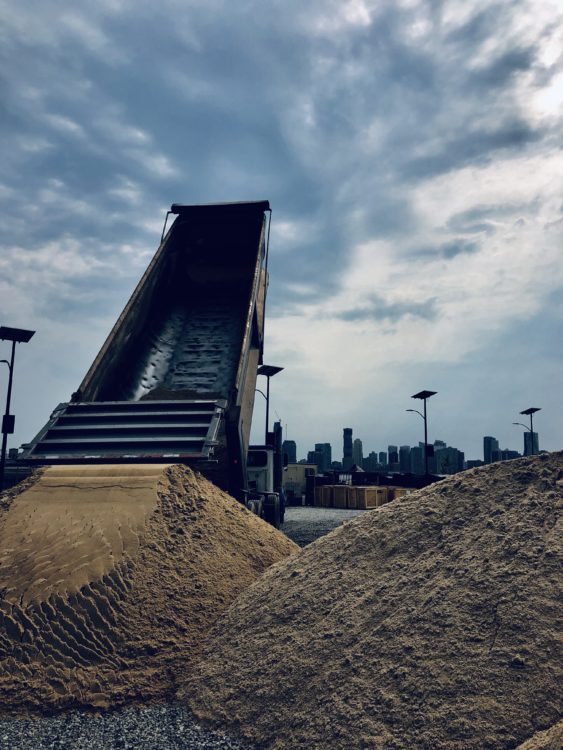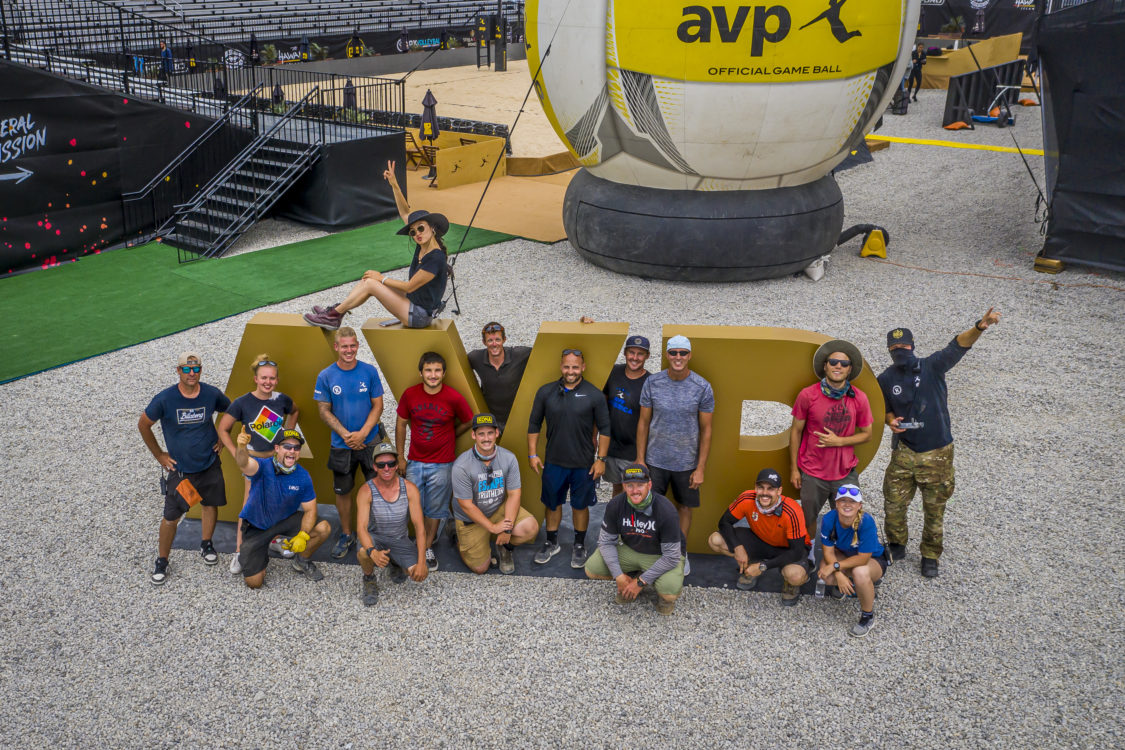Gosh, it’s so easy in California. Roll out of bed, hit the beach, play volleyball until your limbs and lungs say “No more.”
You get a couple of weekends off when the AVP puts up the bleachers and all of a sudden, you’re watching hundreds of players who are better than you are on that same beach.

In the old days, the fans were the bleachers. The earlier you arrived for a tournament, the better the spot for your beach chair. We’ll save the burying a beer keg in the sand for another time (not guilty, your honor), but yes, that’s how it was.
Since beach volleyball has such an extraordinary reach, and not all of us can reach the beach, the AVP has made it a little easier to enjoy with some of the comforts of home. They come to you, beach or not. Austin knows. New York City knows. Seattle knows, and that city will see it this week.
But wait, how do you build a beach?
Believe it or not, some of the most difficult logistical dilemmas can come from Manhattan Beach, Hermosa Beach or Huntington Beach, three of the most accessible beach volleyball venues in the world.

At the same time, you’ve got to sell that to the rest of the country. It starts with the sand. And the bleachers. And every tent that caters to athletes, medical staff, sponsors and media.
“Every site has its unique challenges,” said Andrew Young, Director of Operations.
Nothing more unique than New York City. For three years, the AVP parked itself on two piers at the Hudson River Park. In 2019, they moved it on up the Westside Highway and had to build a stadium where no events of the sort have ever been held.
“Just moving in New York is difficult on foot, let alone driving an 18-wheeler, let alone a dump truck with sand down the New York freeways,” Young said. “It definitely made it tricky.”
They pulled it off, like they do unnoticed on a regular basis. The fewer the complaints, the better they believe in a job well done.
Yes, there are sticking points. Glitches happen with construction, but this crew doesn’t have a lot of time to get it right. At the moment, they’re already in Seattle preparing Sunset Beach and Lake Sammamish State Park. The sand will be 14-16 inches deep, the courts will be right with signage, the venue will be an easy walk to find your favorite players.

“We try to minimize the ‘Uh-ohs.’ Fingers crossed, knock on wood, we haven’t had those types of (major) issues,” Young said. “We try to keep that pattern going. Occasionally you’ll have a tent in the wrong area or the spacing is a little tighter than you hoped for and you have to adjust on the fly to make it right.”
None of this is easy, even in Southern California, where fans have set their calendars for whichever tournament, or all of them. You don’t need dump trucks carrying and dumping sand somewhere. In fact, the sand that is already there poses a problem. It’s also the sand that has developed players from the time they’re born to the time they reach the applause from the stadium.

“Thank goodness I don’t have any horror stories but probably what I do lose most sleep over is being on the beach in Southern California and how deep the sand is,” Young said. “Luckily we have a lot of heavy equipment around. Even some of our biggest and best equipment get stuck in the sand just driving back and forth and creating ruts. At some point it becomes quicksand.”
After a weekend of strolling through the venue, wherever it may be, there will be champions crowned, men and women. Trophies. Some nice suds sprayed around the court. Behind the scenes, there might even be a couple of high-fives that no one else will see on a Sunday afternoon.
 “As a fan and as a person who is enjoying the moment, it’s a pretty cool feeling,” Young said. “That’s what you build it for, when the stands are packed and the final ball hits the ground, everyone’s on their feet, the athletes get the champagne, they’re spraying it, it’s just pure elation and joy from all the staff to the fans.
“As a fan and as a person who is enjoying the moment, it’s a pretty cool feeling,” Young said. “That’s what you build it for, when the stands are packed and the final ball hits the ground, everyone’s on their feet, the athletes get the champagne, they’re spraying it, it’s just pure elation and joy from all the staff to the fans.
“That brings huge smiles from all of us and our hair is tingling and that’s why we do what we do. Put in all the long hours and then we talk about all of the frustrations and difficulties that we go through, but on the flip side, our operational side, it’s like ‘All right, it’s starting to get dark, we’ve been on site for awhile, let’s wrap it up and get on to the next one.’ ”
And on we go.
